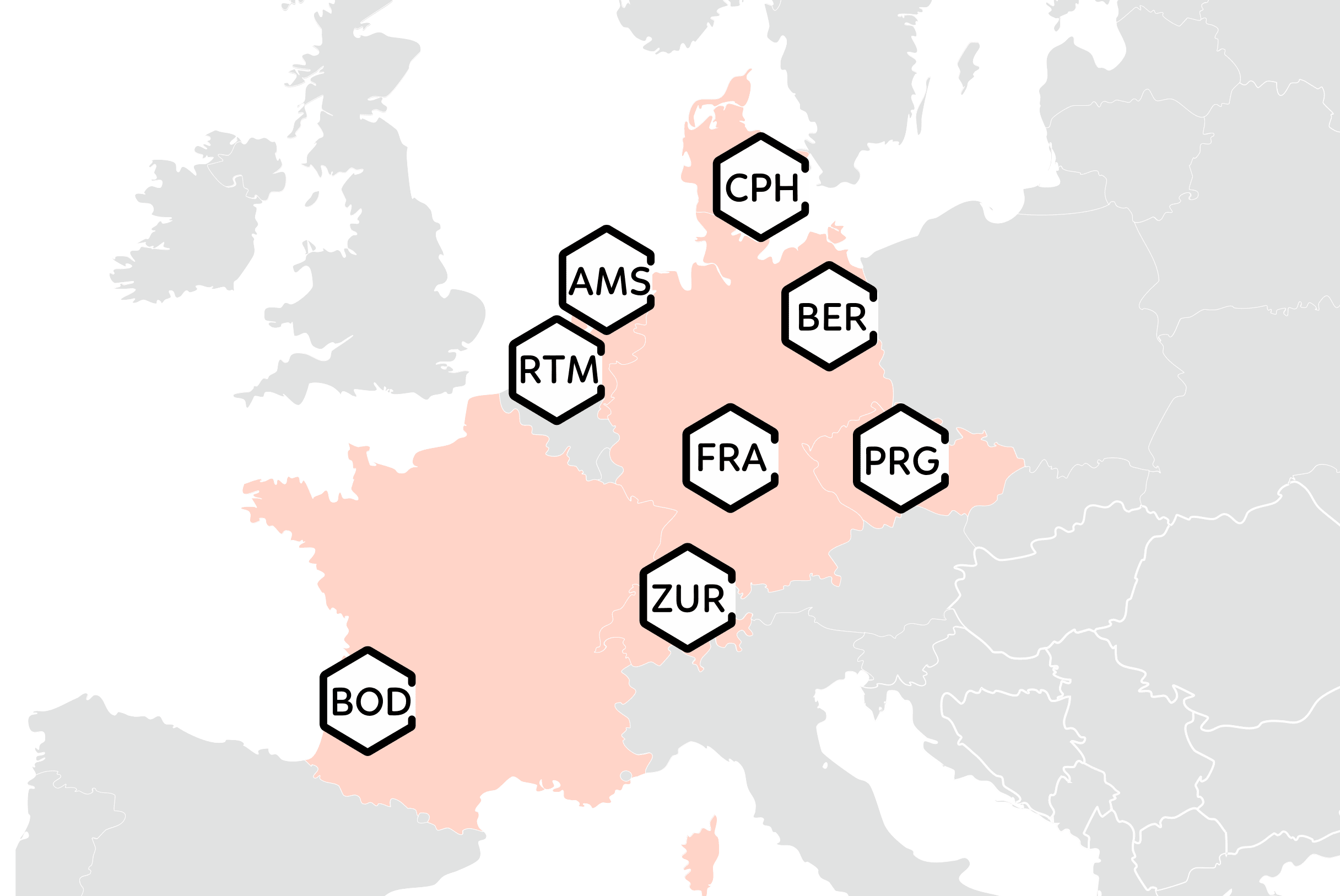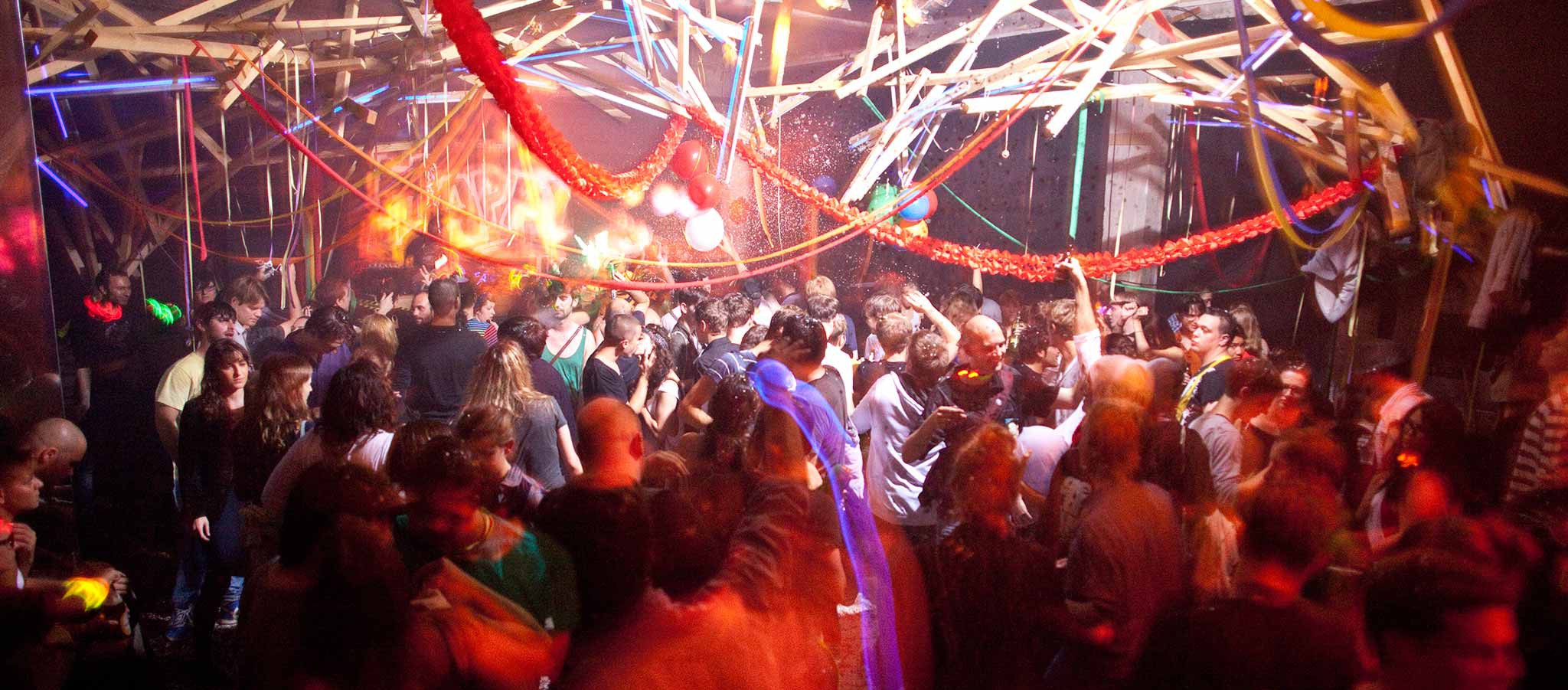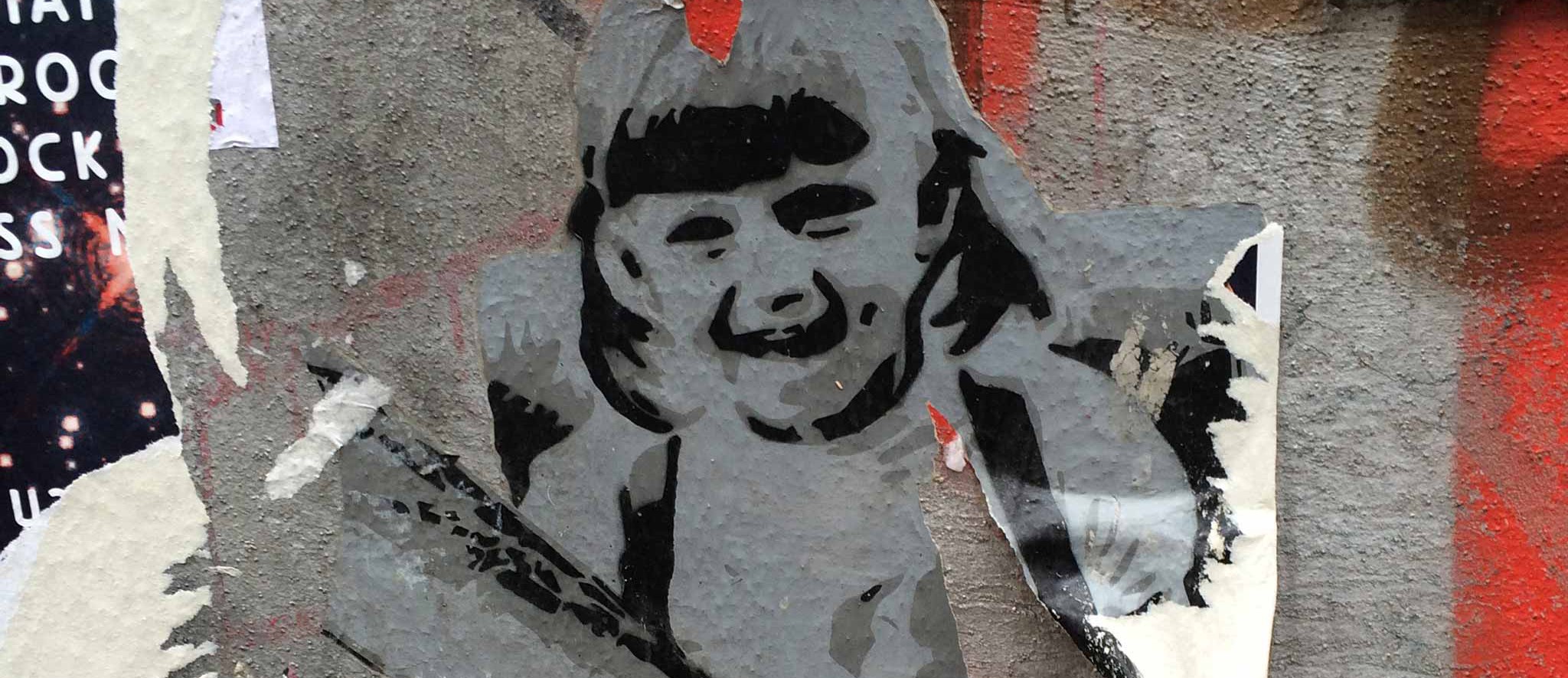Our project investigates six multi-sited case studies across eight European cities: Amsterdam, Berlin, Bordeaux, Copenhagen, Frankfurt, Prague, Rotterdam, and Zurich. Some of these cities have reputations as national and international centers of drug use, whereas others have drug cultures that lay mostly under the radar.
Case Studies
Six multi-sited case studies across nine European cities
Cold War Drug City –
A Narcotic History of Berlin 1949–1989
Berlin, Amsterdam, Prague
In the 1970s, West-Berlin became a hot-spot for new public drug cultures and a laboratory for regulatory approaches. Albeit to a lesser extent, the same holds true for East-Berlin, as – in contact with the West – drug scenes developed that brought together migrants, diplomats, dissidents, students, and others. Especially in the 1980s, the divided city became a crucial hub within a larger network of cities – including Amsterdam and Prague – where knowledge, people, and capital circulated and intertwined with narcotic spaces. Using historical network analysis, archival research and oral history, this project reconstructs the heretofore unexplored networks of public drug cultures in Cold War Berlin that often transcended and undermined the Iron Curtain.

›Junkie Kingdoms:‹
Open Drug Scenes and the Narcotic City
Amsterdam, Rotterdam, Zürich, Frankfurt
The increasing use of heroin and crack cocaine that came into fashion in Europe in the 1970s and 1980s respectively, at some point created a distinctly visible form: ‘Junkies’ and their dealers started to assemble – deliberately or as a consequence of active governmental intervention – near train stations. These locations near public transportation hubs addressed incoming and outgoing commuters, an important consumer group for the informal market. Here, they conducted their business and visibly used drugs in public spaces such as parks. Initially, many visitors were drug users and sellers at the same time, dealing to support their costly habits. Increasingly, however, the roles of sellers and buyers were separated due to repressive politics and the related emergence of organized selling.
In terms of methodology, the project makes use of oral history and archival research in order to conduct an in-depth analysis of several large, concentrated, open drug scenes in Amsterdam, Rotterdam, Zurich, and Frankfurt that existed from the 1960s to the early 1990s. This history sheds light on the shifting debates regarding drug use on the one hand and freedom and safety in public space on the other by offering historical cases that help articulate the intersections of health, policy, and mobility. It examines the struggles of urban actors in dealing with transnational user cultures and diversity in public space, while at the same time elucidating the drug cultures that were present at these open sites from within, starting from the experience of the drug users and sellers themselves. The current memory culture surrounding the history of these former open drug scenes (for instance in movies, museums, memoirs) will be analyzed as well.
Raves and the Golden Age of Partying:
Narcotic Imaginations of Post-Unification Berlin
Berlin, Amsterdam, Bordeaux
This case study examines questions of control, moral panic, romanticism, and geographies of affect linked to (often informal) political economies. It analyses drug cultures that arose from the rave scenes in three European cities: Berlin, Amsterdam, and Bordeaux, with a focus on Berlin. Coming out of the Cold War, the image of newly unified Berlin in the early 1990s was defined by practices, narratives, and imaginations of counterculture, dance, and excess. This new party scene was synonymous with the creative, temporary appropriations of (semi)-public spaces, the rapid emergence of new night-time economies, and the consumption of (relatively new) drugs. All of which created a new mythology of Berlin as hedonistic metropolis of techno, club culture, and new economies of a leisure and consumption-based cultural industry.
We combine the living archive of literature, films, and other artifacts and representations of urban rave culture after 1989 with ethnographic fieldwork and oral his/herstories in order to trace narratives and practices of urban place-making through rave culture. The findings and results from Berlin will be compared with those from Amsterdam and Bordeaux.
Everyday Life
in the Shadow of the Narcotic City
Copenhagen
Alternative Spaces, (Self)Governance, ethnicity and marginalization
The case study explores how the politics of governing drug and marginalized citizens have changed over time, according to shifting visions of the welfare state, social politics and shifting ideologies of state interventions aimed at supporting and/or controlling the more deprived and socially vulnerable populations. In Copenhagen we study Christiania as an alternative public space, a former squatter community and laboratory for alternative everyday urbanisms, democratic organization, strategies of drug governance, and social and environmental justice. We explore the intersection of the governing and regulation of Christiania as a “narcotic city” on the one hand and gentrification processes on the other. In Aarhus we supplement the study with two cases; a “temporary housing” experiment for former homeless people and the stigmatized housing estate Gellerup that are being portrayed as a (public) space of fear with a drug using immigrant youth.

Gendered Governance of the Narcotic City:
Mapping Feminist Party Practices
Amsterdam, Berlin, Bordeaux
Objective: Masculinist discourses and governance practices oftentimes ignore female drug cultures and tend to portray intoxicated female bodies as monstrous mothers or vulnerable victims, especially in public space. As a corrective to this construction of female drug users as objects of anxiety, shame, and disgust, this project will explore how women self-govern drug-related violence and aim to create spaces of care and empowerment for safe and joyful drug use. Drawing on the rich literature on emotional geographies, the morally charged fields of drug use and sexual violence will serve to explore how affect and narratives of emotion are implicated in spatial politics.
Methodologies: The research focuses on the (self-)governing of feminist party spaces in three cities with vibrant and often connected feminist and drug scenes: Berlin, Amsterdam, and Bordeaux. Exploring new participatory methodologies – the use of (collective) zine production for research – the project, firstly, analyzes how users of feminist night time economies perceive the spaces, what feelings are invoked, and what is seen as problematic. Secondly, the project turns to already existing problem-solving attempts and analyzes the self-regulation of feminist party spaces. Awareness and safer drug consumption teams that aim to prevent dangers arising at the intersections of sexist society and drug consumption have recently become common place at leftist festivals, parties, and sometimes even for-profit clubs. Semi-structured interviews with team members and organizers of feminist party spaces as well as participant observation will map existing approaches, analyze the power relations addressed and created by the spatial politics, and examine the role of emotions therein.
Trip Advisors: Public Spaces of Urban Drug-Tourism
Berlin, Amsterdam, Prague
This case study investigates the intersection between urban tourism and the narcotic city. It focuses on drug-tourism in Amsterdam, Berlin and Prague, three cities that share a reputation for having liberal drug policies and vibrant party scenes. All three cities have become increasingly popular destinations for a rising number of tourists as well as short-term residents from across the globe.
By tracing and mapping practices and policies, the project aims to produce new knowledge about the dynamics of drug-tourism, touristification, and gentrification, examining the under-researched relationship between drug cultures and urban tourism.
The project makes use of interviews, mapping, and discourse analysis, paying close attention to touristic practices as well as to local articulations and regulations of drug use and trade. An emphasis is placed on the similarities, differences, and connections among these increasingly touristified cities and the ways actors negotiate local drug cultures and urban change.